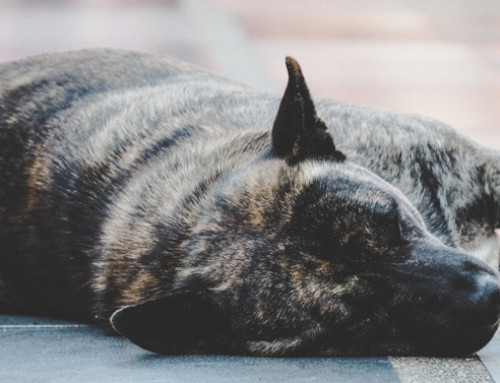“Anxiety can come in many different forms but generally means an animal is feeling or anticipating danger, even though no threat may be apparent at the time. It is important to be able to notice the signs of anxiety to then work towards helping your pet overcome this feeling,” advises Vet Nurse Dr Suead Zumut from VetHQ.
“Signs of anxiety in pets can include: pacing, excessive panting, vocalizing, howling, whining, hiding, avoiding places or people (or attaching to certain people constantly), destructive behaviours, excessive drooling, shaking or inappropriate urinating/defecating in the house.
“The best prevention for anxiety is to properly socialise your pet as a puppy, especially between the ages of 3-13 weeks. Importantly, exposure to new and novel situations, people, animals and things, needs to be continued at least throughout the first year of life.”
Why is early socialisation so important?
Plenty of research has shown that early life experiences are an important part of a dog’s behaviour development. Factors such as maternal care, socialisation and attachment can have lifelong consequences for the behaviour of our furl pals.
Not only can early socialisation play a major role in the dog-owner bonding experience, but it can also affect how four-legged friends interact with other dogs and humans. Simply put, a lack of, or poor socialisation during those early weeks and months can lead to behaviour issues and disorders.
Want to know more about the importance of socialisation, plus get a few tips on how to successfully assist your pup in developing positive interactions? Check out our guide to socialising your puppy.
Cats can get anxious too
While a lot of the chit-chat regarding pets and anxiety tends to focus on our canine chums, it’s worth noting cats can suffer from anxiety also.
Symptoms of anxiety in cats are similar to that of dogs. For example, a cat may go to the toilet outside of its litter tray, its behaviour may change, or it may become more vocal.
Other signs of anxiety in cats include:
- Hissing
- Trembling
- Hiding
- Excessive scratching or other destructive behaviour
- Changes in body language, such as flattened ears and arched back
- Changes in grooming habits
Being aware of these symptoms will help ensure you can offer your feline friend the care and love he or she needs to help them overcome these feelings of anxiety.
Addressing anxiety in pets
“If you notice your animal is anxious, try to identify situations, patterns or obvious triggers that cause them to become anxious. It is important to speak to your local vet to come up with a treatment plan,” says Dr Zumut.
Some first steps you may like to take include:
Initially limiting exposure to triggers
Indeed, certain triggers may make your pet anxious. For example, the sound of your keys rattling, as perhaps your pet knows he or she is going to be left alone. To prevent this you may have to make a concerted effort to pick your keys up without allowing them to rattle, or you may need to change where you keep your keys.
Create a calm and safe environment
Most pets have a favourite spot in the home, where they like to curl up and relax. The next time your pet is showing signs of anxiety, encourage him or her to go to their safe place.
Avoid praising your pet during an anxious episode
You can be forgiven for thinking you’re doing the right thing by cuddling and petting your pet when they are feeling anxious. However, doing this makes your pet think they are reacting appropriately.
Crate training
This involves training your pet to feel that the confined area (i.e. the crate) is their safe and comfortable space. Note: this needs to be done slowly, calmly and not when your pet is in the midst of an anxious episode/period.
Pet products
Many owners use dog appeasing pheromones (e.g. Adaptil) collars or diffusers to help their fur pal’s environment feel calmer. In fact, this seems to be a growing area in the pet product market.
Stylish Hound is one such brand that has an entire range of enrichment products to help ease anxiety in dogs. Some of its most popular products include Hercules Chew Toys—nifty tools that you fill will your pooch’s favourite treats to help keep him stress-free and entertained (while you sneak out the front door to work!).
There are also Lick Mats, as licking can be a sign of anxiety and stress, and Snuffle Mats. The latter comes in the form of a big squishy pad in which you can nestle treats. Your fur pal then uses his super sense (i.e. smell) to sniff our tasty snacks. It’s really all about distraction!
Dr Zumut adds, “Rewarding calm behaviour, training new behaviours for a different focus, and daily exercise is also important for alleviating anxiety in pets. And remember; do not punish your pet, as this is likely to increase their anxiety.
“Teaming up with your vet or a behavioural specialist to slowly work through a treatment plan involving desensitisation and behavioural conditioning may also prove useful.”
Does your pet suffer from anxiety? What treatments have you tried?
Image source: Mia Anderson | Unsplash







Leave A Comment